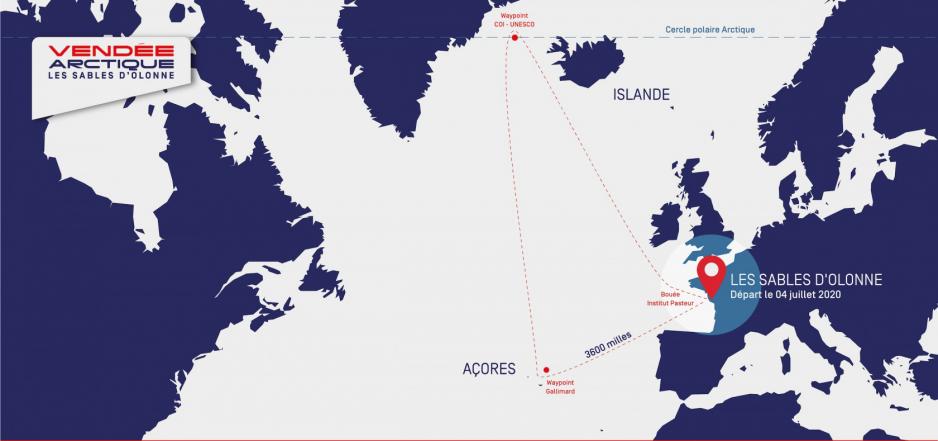World-famous Vendée Globe sailing race heads to the Arctic Ocean
It's the first major sailing race to enter the Arctic.

The Vendée Globe, a world-famous solo non-stop yacht race around the world, sets off on a special preparatory and qualifying event to the Arctic next week. It will be the first major yacht race to cross into the Arctic Ocean.
The Vendée Arctic, as the organizers call the race, will depart from les Sables d’Olonne in the Vendée region in western France with 22 competitors on July 4. The course will take the boats near the Arctic Circle to the west of Iceland before turning south to the Azores archipelago and returning to France. The fastest competitors, sailing in 60 feet monohull yachts, are expected to complete the 3,600-mile race in 10-12 days.
Covid-19 forces change of plans
Traditionally, the organizers of the Vandée Globe offer a number of yacht races earlier in the year during which participants can both qualify for the circumnavigation and test their boats. A transatlantic crossing from New York to Les Sables d’Olonne in the Vendée was scheduled for mid-June as the main “warm-up” before the Vendée Globe around the world in November.
With ongoing travel restrictions to and from the United States, event officials were forced to devise an alternative race and landed on the Arctic Ocean as a challenging and yet attractive option.
In light of the Covid-19 pandemic most competitive sailors have not been on the water in more than three months. The Vendée Arctic will serve as a prologue and “shake-down” race allowing sailors to test their modified or new yachts and for many it will be the first time they will have been on their boats this season.
In order to abide by ongoing strict health restrictions there will be no race village or public events related to the start of the race. Sailors will be tested for the virus, self-quarantine for five days prior to the race and proceed directly to the start line aboard their yachts.
Only test before the circumnavigation
The fleet will sail to 65 degrees northern latitude at the edge of the Arctic Circle.
“This will be the only solo competitive and technical offshore race that the skippers will be able to take part in before the start of the Vendée Globe on 8th November, and that is why it was so important to ensure it takes place. This is an ambitious course,” explains Jacques Caraës, Race Director for the Vendée-Arctic-les Sables d’Olonne and the Vendée Globe.
“With a 3600-mile long triangular course (around the same distance as a transatlantic crossing), the idea is to sail up to pick up the active weather systems in the North of the Atlantic and to get the boats sailing in various points of sail and in a wide range of conditions. With ice present to the west of Iceland, we will have similar constraints to those found in the Southern Ocean. We are going to have to put an exclusion zone in place to avoid the drift ice.”
A small risk of sea ice
While the waters around Iceland have seen less and less sea ice over the past two decades, drift ice can reach all the way to the island even during summer months whenever strong southerly winds persist. In 2018, sea ice reached close to the island’s Westfjords region.
“Sea currents determine mostly the path the ice is going instead of wind. Some years bigger ice floes reach the NW coast and melt there. This is always a possibility when there are long lasting southerly winds in the Greenland strait between Iceland and Greenland,” Óli Þór Árnason, a meteorologist at the Icelandic Meteorological Office, told High North News. Current ice conditions look favorably as sea ice remains concentrated along the Greenlandic coast.
First major sailing race to enter Arctic
The race represents the first time professional sailors will compete in the Arctic. “It’ll be the first major sailing race to go that far north and back,” says Mikaa Mered, a professor and Arctic expert at the International Institute of Diplomatic Studies and Research.
In 2015 a “Sail the Arctic Race” was announced for 2017 to much media coverage, but failed to materialize. The course would have taken competitors from New York to Victoria, British Columbia via the Northwest Passage across six different legs. The substantial entry fee of $50,000 as well as the requirements to construct expensive specialized “STAR46” yachts out of volcanic fiber at a cost of $1 million, proved too prohibitive.